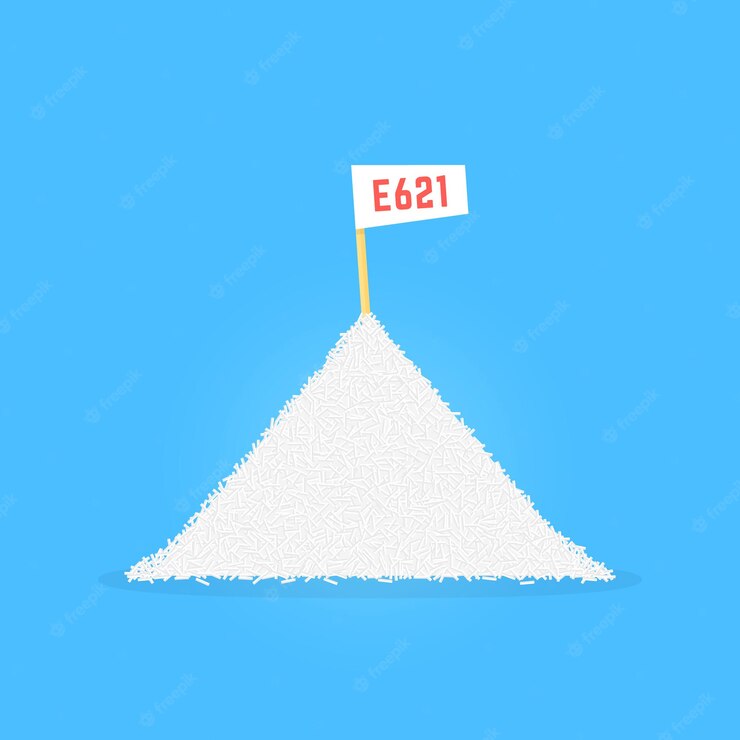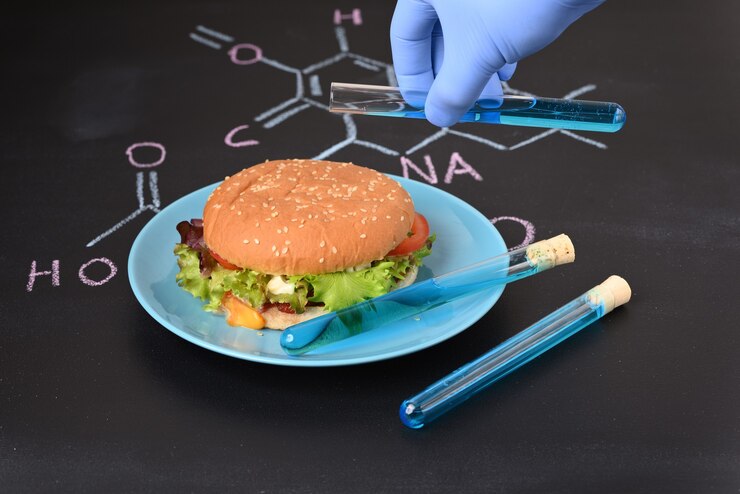E621 - Food Code Meaning And Facts About Monosodium Glutamate
Monosodium glutamate, or MSG, is a sodium salt of glutamic acid, an amino acid. The E number E621 indicates that it is a commonly used food ingredient as a seasoning or flavor enhancer. For a long time, MSG has been the subject of debate due to health concerns.
Author:Suleman ShahReviewer:Han JuOct 06, 20225.8K Shares368.6K Views

Monosodium glutamate, or MSG, is a sodium salt of glutamic acid, an amino acid. The E number E621indicates that it is a commonly used food ingredient as a seasoning or flavor enhancer. For a long time, MSG has been the subject of debate due to healthconcerns.
E621 is also an imageboard dedicated to furry artwork. Several extreme fetishes are shown, and most of the material is sexual. E926 is the more hygienic alternative.
What Is E621?
Years ago, the code E621 was used to talk about the flavor enhancer monosodium glutamate (MSG). Many foods use MSG to improve their taste. MSG has an E number (Europe's standard coding for chemicals) of E621.
It was in February of 2007 when the domain name e621.net first became live. It's unclear whether the board's name was chosen because of its similarity to MSG or if it was just a coincidence. Its analog, E926, has the same name as the E number for a bleaching agent: chlorine dioxide, which may be a metaphor for using eye bleach to forget what was seen on E621.
In 2017, E621 surpassed all other furry-specific websites in termsof traffic. It's so popular that it outranks searches for "furry porn." This is likely because, unlike competing services, anyone may view its library of erotic artwork without creating an account.
Since the site caters to extreme fetishes, even people who don't identify as furries may find themselves there. Multiple attempts to reopen the site have been met with failure. Several of them were about the fact that the site used to have drawings of cartoon characters that were not appropriate for kids.
E621 Monosodium Glutamate
Glutamic acid, one of the most common naturally occurring non-essential amino acids, is the amino acid from which monosodium glutamate is derived. Tomatoes, grapes, cheese, mushrooms, and other foods contain glutamic acid naturally.
For the same reason glutamate is naturally occurring in meals like stews and meat soups, monosodium glutamate (MSG) is utilized in the food industry as a flavor enhancer with an umami flavor amplifies the meaty, savory flavor of food.
In an attempt to replicate the flavor of kombu, an edible seaweed used as a foundation in many Japanese soups, Japanese scientist Kikunae Ikeda initially made it in 1908. The taste of other ingredients is complemented and rounded out by MSG, making the whole more enjoyable.
According to the FDA, MSG is safe for human consumption. Double-blind studies have failed to establish evidence of a response to high doses of MSG, despite the common assumption that it might produce headaches and other uncomfortable emotions (known as "Chinese restaurant syndrome").
The European Union considers it a food additive allowed in limited quantities and only in particular foods. MSG's HS code and E number are 29224220 and E621, respectively.
Video unavailable
This video is unavailable: Original link to video
Is E621 Safe To Consume?
Whether or not E621 is safe to consume is a matter of considerable debate since there has been extensive propaganda against MSG (E621) in western nations over the last century. Many anti-immigrant organizations in the past did not like Chinese people building restaurants; therefore, they spread this lie to discourage immigration to the United States.
When used as intended (in food and not intravenously or anything ridiculous like that), there is no danger associated with E621. It's better to use it instead of salt on snack foods or dishes you would typically add since it's far more potent than table salt while also being significantly lower in sodium (pasta sauce, for example).
E621 Side Effects
E621, often known as monosodium glutamate (MSG), is a flavor enhancer frequently used in commercial cooking and found in many processed foods such as canned vegetables, soups, and deli meats.
The FDA has determined that MSG is GRAS (generally recognized as safe) for use in food production. But whether or not to use it remains controversial. Because of this Food and Drug Administration rule, MSG must be written on food labels.
For a long time now, MSG has been a staple in the kitchen. The FDA has received several complaints of people experiencing worrying symptoms that they believe are caused by MSG-containing foods. Common symptoms of the MSG symptom complex include:
- Headache
- Flushing
- Sweating
- Squeezing or pressure on the face
- A loss of sensation (numbness), tingling, or burning in the face, neck, and other regions.
- Fluttering, racing heartbeats
- Discomfort in the chest
- Feverish and nauseated (nausea)
- Weakness
Yet, scientists have not to discord any conclusive evidence connecting MSG to these signs and symptoms. However, scientists concede that some individuals could have temporary side effects from MSG. Mild symptoms seldom need medical attention. Only by avoiding meals containing MSG may an allergic reaction be avoided.
People Also Ask
What Does E621 Mean?
Years before it was associated with furries, the code E621 referred to the flavor enhancer monosodium glutamate (MSG). Many foods use MSG to improve their taste. MSG has an E number (Europe's standard coding for chemicals) of E621.
What Is The Name Of The E621 Mascot?
The fursona of Knotty Curls is a peacock-like creature from another realm. His fursona serves as e621's mascot and may be seen there.
Is E621 Vegetarian?
Monosodium glutamate, also known as E621, is only a codename for this ingredient. E621/MSG, or whatever you like to call it, is always made in a cruelty-free and animal-product-free manner. E621 does not eat any animal products.
Final Words
Many processed foods, such as chips, soups, crackers, and other snacks, contain the food additive E621 to "enhance" their flavors. However, E621 itself is vegan. E621/MSG, or whatever you like to call it, is always made in a cruelty-free and animal-product-free manner. There is no doubt that E621 is vegan.

Suleman Shah
Author
Suleman Shah is a researcher and freelance writer. As a researcher, he has worked with MNS University of Agriculture, Multan (Pakistan) and Texas A & M University (USA). He regularly writes science articles and blogs for science news website immersse.com and open access publishers OA Publishing London and Scientific Times. He loves to keep himself updated on scientific developments and convert these developments into everyday language to update the readers about the developments in the scientific era. His primary research focus is Plant sciences, and he contributed to this field by publishing his research in scientific journals and presenting his work at many Conferences.
Shah graduated from the University of Agriculture Faisalabad (Pakistan) and started his professional carrier with Jaffer Agro Services and later with the Agriculture Department of the Government of Pakistan. His research interest compelled and attracted him to proceed with his carrier in Plant sciences research. So, he started his Ph.D. in Soil Science at MNS University of Agriculture Multan (Pakistan). Later, he started working as a visiting scholar with Texas A&M University (USA).
Shah’s experience with big Open Excess publishers like Springers, Frontiers, MDPI, etc., testified to his belief in Open Access as a barrier-removing mechanism between researchers and the readers of their research. Shah believes that Open Access is revolutionizing the publication process and benefitting research in all fields.

Han Ju
Reviewer
Hello! I'm Han Ju, the heart behind World Wide Journals. My life is a unique tapestry woven from the threads of news, spirituality, and science, enriched by melodies from my guitar. Raised amidst tales of the ancient and the arcane, I developed a keen eye for the stories that truly matter. Through my work, I seek to bridge the seen with the unseen, marrying the rigor of science with the depth of spirituality.
Each article at World Wide Journals is a piece of this ongoing quest, blending analysis with personal reflection. Whether exploring quantum frontiers or strumming chords under the stars, my aim is to inspire and provoke thought, inviting you into a world where every discovery is a note in the grand symphony of existence.
Welcome aboard this journey of insight and exploration, where curiosity leads and music guides.
Latest Articles
Popular Articles

